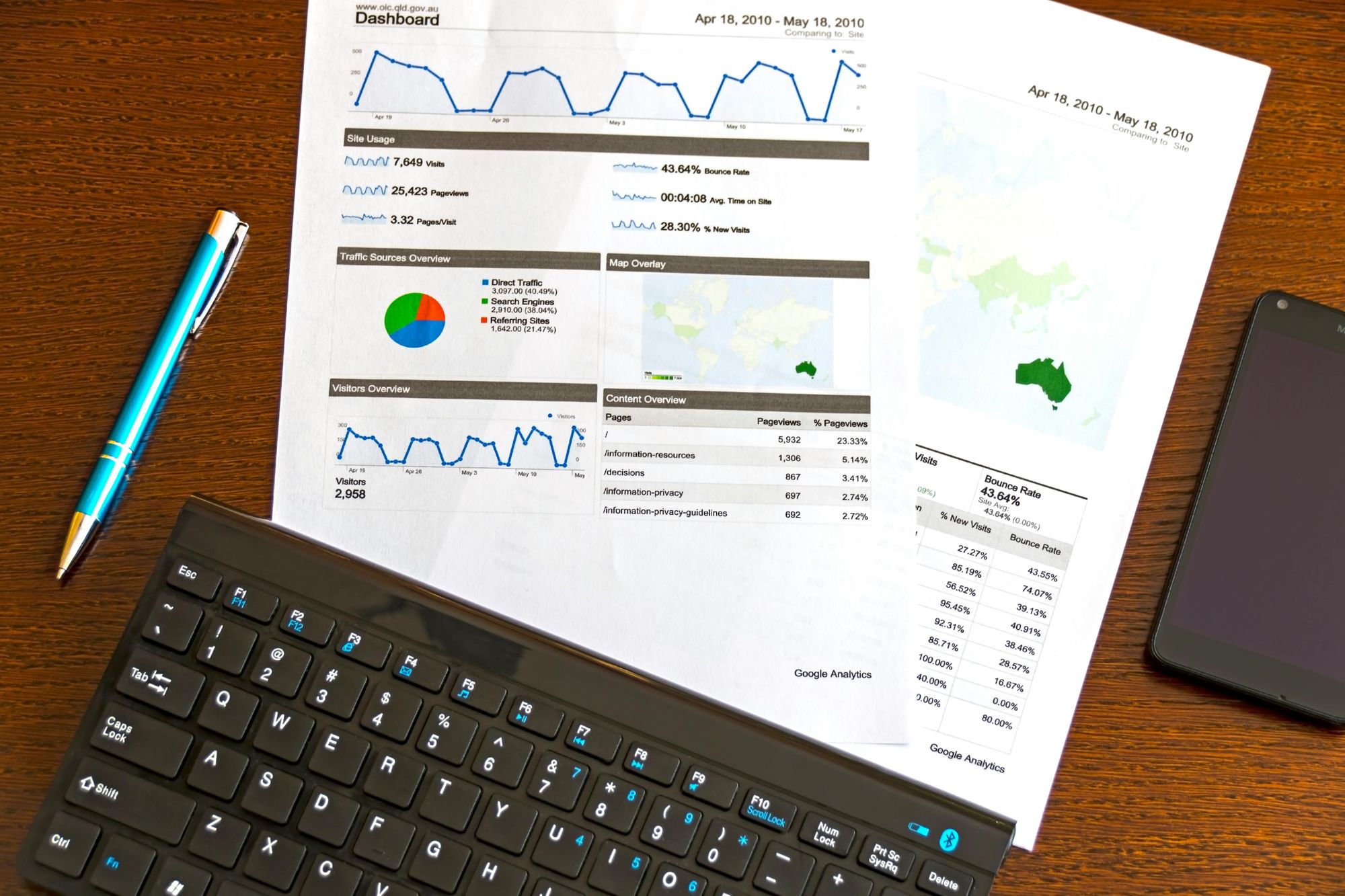What is the importance of data analysis tools?
Data analysis plays a crucial role in modern decision-making processes across various sectors. Organizations rely on data to gain insights, evaluate performance, and guide strategy.
By analyzing data, they can identify trends, monitor key performance indicators, and make informed choices that can drive growth and efficiency. Decision-makers can leverage the insights gained from thorough analysis to refine their strategies, allocate resources more effectively, and mitigate risks.
Role of Data Analysis Tools in Data-Driven Strategies
Data analysis tools are instrumental in developing effective, data-driven strategies. These tools simplify the collection, processing, and visualization of data, allowing analysts to transform raw data into meaningful insights. With the computational power of these tools, teams can perform complex analyses that would be difficult or time-consuming through manual methods.
The effectiveness of these tools in formulating strategies can be observed in their ability to execute various data analysis methods. Key functionalities of data analysis tools may include:
- Data Collection: Collecting data from multiple sources, including web scraping and databases.
- Data Processing: Cleaning and organizing data to ensure accuracy and reliability.
- Visualization: Creating visual representations of data that make trends and insights easily understandable.
- Collaboration: Facilitating collaboration among data teams by integrating with other systems and sharing insights.
Investing in data analysis tools equips organizations with the necessary capabilities to harness data effectively. This strengthens their competitive edge by enabling proactive strategies grounded in insightful analysis. For an in-depth exploration of various analysis techniques, refer to our article on data analysis techniques.
Types of Data Analysis Tools
Data analysis tools come in various forms, each serving distinct purposes in the analytical process. Understanding the types of tools available can empower data analysts and scientists to select the right software for their specific needs.
Statistical Analysis Software
Statistical analysis software provides powerful techniques for examining data sets, testing hypotheses, and performing a variety of statistical tests. These tools are essential for conducting rigorous data analysis and drawing meaningful conclusions from numerical data.
| Tool Features | Examples |
|---|---|
| Data manipulation capabilities | Ability to handle large data sets, perform complex calculations |
| Availability of statistical tests | T-tests, ANOVA, regression analysis |
| Reporting and output generation | Charts, graphs, and statistical summaries |
Statistical software can help in understanding data distributions, relationships, and trends.
Business Intelligence Tools
Business intelligence (BI) tools enable organizations to turn raw data into actionable business insights. These tools often incorporate data warehousing, reporting, and analytics features to support data-driven decision-making.
| Tool Features | Examples |
|---|---|
| Dashboard creation | Visual summaries of key performance indicators (KPIs) |
| Data integration | Combining data from multiple sources for a comprehensive view |
| Reporting capabilities | Customizable reports for stakeholders |
BI tools provide a user-friendly interface for exploring data trends and generating insights that aid in strategic planning.

Data Visualization Platforms
Data visualization platforms specialize in transforming data into visual formats, making it easier to interpret complex data sets. Effective visualizations can enhance understanding and communicate insights clearly to stakeholders.
| Tool Features | Examples |
|---|---|
| Interactive charts and graphs | Dynamic visualizations that allow user interaction |
| Geographic mapping | Visual representation of data geographically |
| Customizable templates | Ability to tailor visuals to specific needs |
These platforms support the narrative of data by presenting it in a visually appealing and comprehensible manner.
Choosing the right data analysis tools is vital in optimizing analytical efforts and deriving valuable insights to inform decision-making. Understanding the strengths and functionalities of each type allows data professionals to enhance their analysis capabilities effectively.
Using Data Analysis Tools Effectively
To maximize the potential of data analysis tools, it is essential to utilize them effectively. This section discusses key practices, including data preparation and cleaning, exploratory data analysis, and implementing advanced analytical techniques.
Data Preparation and Cleaning
Before delving into analysis, preparing and cleaning the data is paramount. Raw data often contains inaccuracies, duplicates, and missing values that can skew results. Analysts must employ methods to ensure data quality, which can significantly impact the insights derived.
Key steps in data preparation include:
- Data Cleaning: Identifying and correcting errors or inconsistencies in the dataset.
- Removing Duplicates: Ensuring that each entry in the dataset is unique.
- Handling Missing Values: Using techniques such as imputation or removal to deal with gaps in data.
| Step | Description |
|---|---|
| Data Cleaning | Correct inaccuracies and inconsistencies |
| Removing Duplicates | Eliminate repeated entries |
| Handling Missing Values | Address gaps using imputation or removal |

Using Data Analysis Tools Effectively
To maximize the potential of data analysis tools, it is essential to utilize them effectively. This section discusses key practices, including data preparation and cleaning, exploratory data analysis, and implementing advanced analytical techniques.
Exploratory Data Analysis
Exploratory Data Analysis (EDA) involves summarizing the main characteristics of the data, often through visual methods. EDA helps analysts understand the underlying patterns and structures within the dataset.
Key components of EDA include:
- Descriptive Statistics: Calculating measures such as mean, median, mode, and standard deviation to summarize data characteristics.
- Data Visualization: Utilizing charts, graphs, and plots to identify trends, outliers, and relationships within the data.
| EDA Technique | Purpose |
|---|---|
| Descriptive Statistics | Summarize data characteristics |
| Data Visualization | Reveal trends and patterns |
Implementing Advanced Analytical Techniques
Once data preparation and exploratory analysis are complete, analysts can implement advanced analytical techniques. These methods allow analysts to derive deeper insights and make data-driven predictions.
Some common advanced techniques include:
- Regression Analysis: Used to examine relationships between variables and predict future outcomes.
- Cluster Analysis: Helps in grouping similar data points for segmentation and targeted analysis.
- Time Series Analysis: Focuses on analyzing data points collected or recorded at specific time intervals.
| Technique | Description |
|---|---|
| Regression Analysis | Examines relationships and predicts outcomes |
| Cluster Analysis | Groups similar data points for segmentation |
| Time Series Analysis | Analyzes data over time |
By following these practices and employing the appropriate techniques, analysts can harness the full potential of data analysis tools, enabling more informed decision-making and improved strategic outcomes.
Benefits of Data Analysis Tools
Data analysis tools offer several key advantages that enhance business operations and strategic decision-making. These benefits are critical for organizations seeking to leverage data effectively.
Improved Decision-Making
One of the primary advantages of utilizing data analysis tools is the ability to make informed decisions. By transforming raw data into meaningful insights, businesses can evaluate various scenarios and outcomes more clearly. This, in turn, leads to decisions based on evidence rather than intuition.
| Decision-Making Aspect | Traditional Method | Data Analysis Tool Method |
|---|---|---|
| Speed of Analysis | Slower | Faster |
| Accuracy of Data | Prone to Errors | Higher Accuracy |
| Reliability of Insights | Subjective | Objective |
By using data analysis tools, teams enhance the reliability of their insights, leading to better outcomes.
Enhanced Strategic Planning
Data analysis tools play a pivotal role in strategic planning by providing a comprehensive view of current trends and future forecasts. Organizations can assess various factors affecting their operations, market trends, and customer preferences using these analytics systems. This level of analysis aids in setting achievable goals and allocating resources effectively.
| Planning Focus | Without Data Analysis Tools | With Data Analysis Tools |
|---|---|---|
| Goal Setting | General Goals | SMART Goals |
| Resource Allocation | Guesswork | Data-Driven |
| Forecasting | Limited Insight | Informed Projections |
Utilizing these tools allows companies to create more robust strategies that are grounded in data, increasing the likelihood of success.
Competitive Advantage through Data Insights
Organizations that harness the power of data analysis tools gain a significant edge over competitors. Data-driven insights enable teams to identify trends and opportunities that others may overlook. This competitive advantage often translates to enhanced services, improved customer experience, and increased revenue.
| Competitive Advantage | Without Data Analysis Tools | With Data Analysis Tools |
|---|---|---|
| Market Awareness | Low | High |
| Innovation Opportunities | Limited | Enhanced |
| Customer Insights | Basic | Detailed |
Being proactive in data analysis positions companies to adapt quickly to market changes, ultimately fostering sustained growth and enhanced profitability.
In summary, leveraging data analysis tools not only improves decision-making and enhances strategic planning but also provides a competitive advantage through meaningful data insights. For further exploration of skills in this area, refer to our article on data analysis skills or dive into data analysis in Python for technical implementation guidance
Are you looking for a trusted partner in solving your data analysis and insights challenges?
With expertise in web scraping, data extraction, and tailored analytics, DataHen helps businesses unlock critical insights efficiently. Whether you need raw data for analysis or ready-to-use insights, DataHen’s services streamline your data processes, enabling you to make informed decisions and drive growth confidently.




